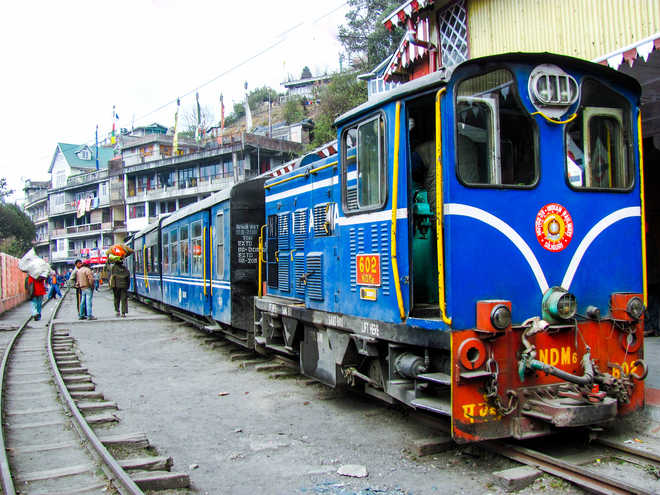Quiet chugs the toy train
Tanushree Podder
Those who have watched Aradhana, Parineeta and Barfi will never forget the charming blue toy train that chugs through the scenic landscape of Darjeeling. The famous Darjeeling Himalayan Railway dons the title of Unesco heritage site with modesty. However, the title didn’t come easy, nor did it come too soon. In fact, it took more than a century after it came into being.
Darjeeling, where a sanatorium had been constructed by the British, was a fairly inaccessible place in the 19th century. As it began gaining popularity as a hill station, an acute need for a viable transportation system was felt. The lack of suitable connection with Calcutta was felt even more when the tea gardens began yielding their rich treasure of tea leaves.
In those days, reaching Darjeeling from Calcutta meant a tedious journey of over two weeks. A part of that journey was undertaken by train and a part by steamer, with the final part being covered in a horse drawn carriage.
It was Franklin Prestage, an agent of Eastern Bengal Railways, who proposed the setting up of a privately run train to Darjeeling on a narrow gauge. The Darjeeling Himalayan Railway (DHR) was born. It was an arduous task to lay the rail lines on the steep gradient; yet, it began in 1879. Work progressed in phases, with short distances being covered and tried. Hurdles were aplenty. The train could not negotiate the hair pin bends at several points. It is said that Herbert Rumsey, the contractor in charge of laying the tracks, was stuck for a solution. It was while he was dancing with his wife that her innocent remark showed a way out to his problems. All she said was that a turn, like in ball dance, could see him out of a corner. With that, the idea of Z reversals, a double loop at Chunbhatti and a single one at ‘Agony point’, were born. The Batasia Loop, to negotiate the steep descent, also came about from the same theory.
On March 4, 1881, the toy train chugged all the way from Siliguri to Tindharia making its debut journey. None less than Lord Lytton, the then Viceroy of India, accompanied by Lady Lytton, rode the train on its inaugural journey and a legend was born.
By April 1881, the Darjeeling Himalayan Railway reached Ghoom, the highest narrow gauge railway station in Asia. The track was then extended up to Darjeeling and the little blue train finally rolled into Darjeeling on the July 4, 1881, and so began the country’s romance with the little blue toy train.
Although many of the steam engines have been replaced by faster diesel ones, a couple of them are still in operation. Passengers are sometimes treated to the unusual sight of an attendant sprinkling sand on the track to prevent skidding on the steep gradient.
On December 2, 1999, the Darjeeling Himalayan Railway was finally declared as a world heritage site by Unesco. In fact, it is the second railway in the world to receive the title. Today, taking a joy ride on the toy train remains the most popular activity for visitors to Darjeeling, the queen of hill stations.









